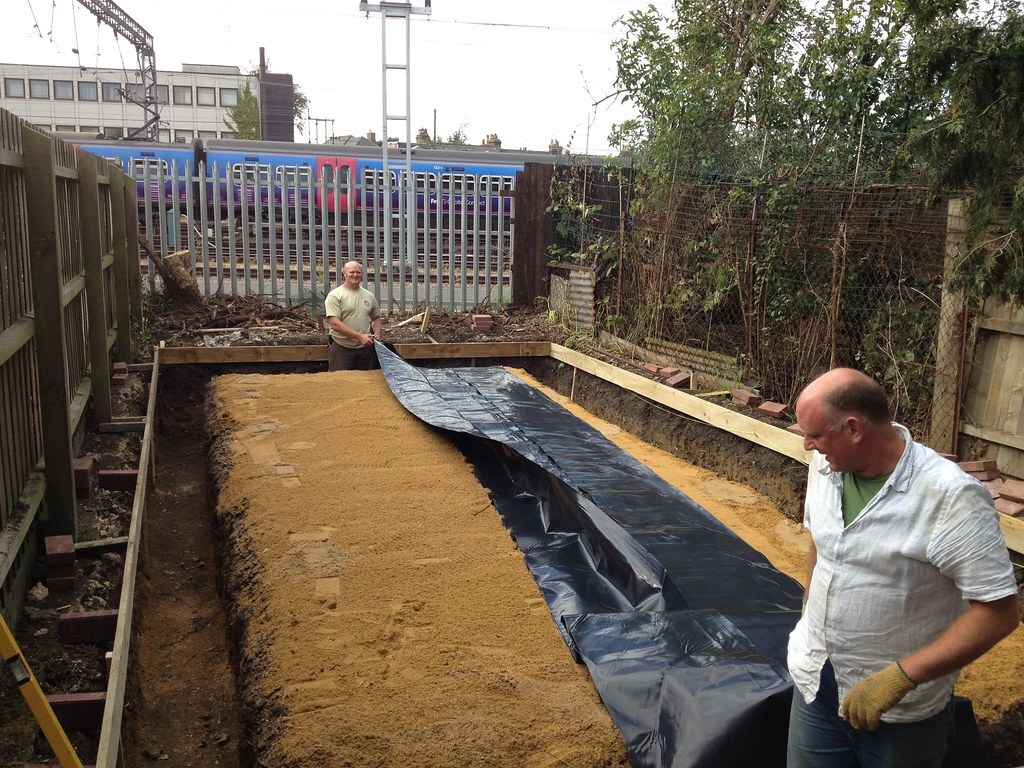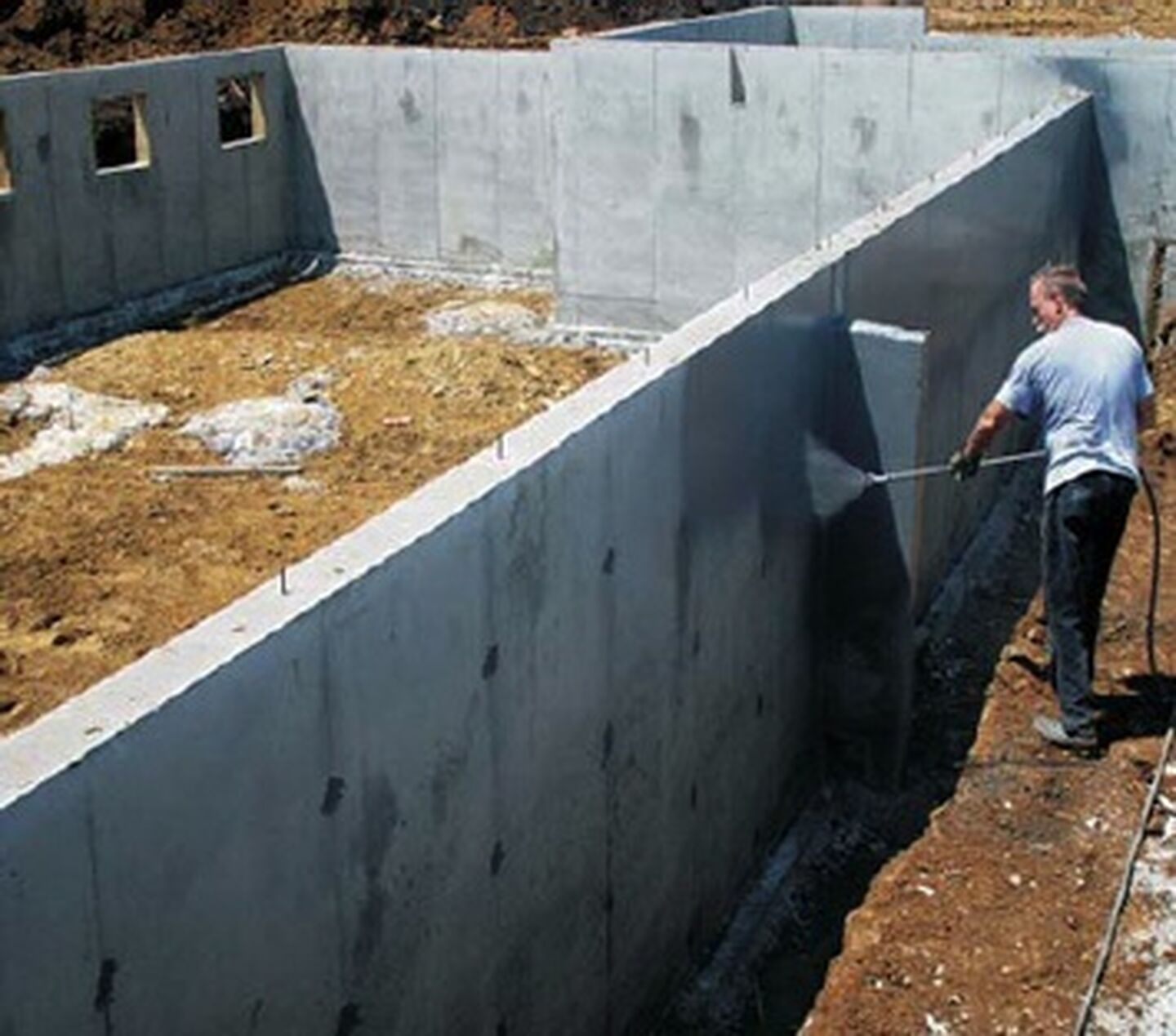Checking Out the Numerous Methods and Solutions for Effective Damp Proofing
Wetness in buildings postures significant difficulties to both structural honesty and indoor air high quality. Numerous techniques and options have actually arised to fight this prevalent concern. From standard damp-proof membrane layers to cutting-edge chemical treatments, each method uses unique advantages. Comprehending these alternatives is crucial for effective moisture control. Selecting the ideal option depends on details structure problems and requirements, prompting further exploration right into the most effective damp proofing techniques available.
Comprehending the Root Causes Of Dampness
Dampness can arise from numerous resources, comprehending these causes is vital for reliable remediation. Commonly, wetness stems from three primary resources: increasing damp, permeating wet, and condensation. Rising damp happens when groundwater takes a trip up with porous materials, such as block or rock, often as a result of an absence of an effective barrier (mould removal newcastle). Permeating moist is normally triggered by outside variables, including roofing system leakages, faulty gutters, or damaged walls, allowing water to penetrate a property. Condensation, on the other hand, arises from excess dampness airborne, often worsened by inadequate ventilation and temperature distinctions, bring about water droplets basing on surface areas. Determining these underlying problems is vital, as each kind of wetness calls for a tailored method for remediation. Appropriate evaluation assists in establishing the most effective solutions, ultimately securing the architectural honesty of a structure and improving interior air quality
Traditional Damp-Proof Membranes

Chemical Damp-Proofing Solutions
Chemical damp-proofing solutions supply an innovative technique to avoid wetness breach in buildings. These techniques usually entail the application of liquid chemicals that permeate masonry and create a barrier against increasing wet. Generally made use of chemicals consist of silanes, siloxanes, and other water-repellent representatives that respond with surface area products to develop a hydrophobic layer.The application process generally calls for drilling openings into the walls, infusing the chemical service, and enabling it to heal. This method is specifically beneficial for older frameworks where standard damp-proof membranes may be impractical. Moreover, chemical damp-proofing can be much less disruptive and extra cost-efficient than extensive remodelling projects.While effective, these solutions depend on proper application and ecological problems for peak efficiency. Regular maintenance and monitoring are necessary to guarantee the long life of the damp-proofing treatment. Generally, chemical damp-proofing represents a flexible choice for securing structures versus moisture-related damage
Dental Caries Wall Building Techniques
Cavity wall surface building techniques provide many benefits, especially in moisture control and energy effectiveness. By incorporating an air space between 2 layers of masonry, these wall surfaces effectively minimize water access while boosting insulation. This mix not just protects structures from dampness but additionally adds to reduced energy usage.
Advantages of Tooth Cavity Walls
When taking into consideration effective wet proofing approaches, the advantages of tooth cavity wall surfaces stand apart prominently. Cavity wall surfaces contain 2 separate layers, producing an air gap that properly reduces moisture infiltration. This style minimizes the threat of moisture, as the external wall surface functions as a barrier versus rain and water ingress. Furthermore, dental caries walls enhance thermal insulation, which contributes to power performance by reducing warm loss. They likewise supply sound insulation, assisting to produce a quieter interior environment. The air void enables for ventilation, which assists in wetness control and reduces the probability of mold growth. These advantages not just improve the overall convenience of a structure but additionally add to its durability and architectural honesty.
Dampness Control Strategies
Efficient moisture control approaches are critical in tooth cavity wall surface construction to assure long-lasting security against wetness. One key method involves the unification of weep holes, which promote water drain from the dental caries, stopping accumulation. In addition, making use of breathable membrane layers can help manage dampness levels while enabling caught vapor to escape. Appropriate positioning of insulation is likewise essential, as it should not block drain paths. In addition, making certain that the external leaves of the cavity wall surface are created with water-resistant materials enhances overall longevity. Normal upkeep checks are vital to determine any blockages or damage early, guarding the structure's honesty. Ultimately, a mix of these techniques forms a robust defense against moisture invasion in tooth cavity wall surfaces.
Insulation and Energy Performance
Insulation plays an important duty in enhancing energy effectiveness within tooth cavity wall construction. By integrating insulating materials, these walls create a thermal barrier that minimizes warmth loss and reduces energy intake. Efficient insulation not just helps keep a steady indoor temperature however likewise minimizes the threat of wetness, as it protects against condensation within the wall dental here caries. Numerous techniques, such as making use of inflexible foam boards or mineral wool, can be utilized to achieve ideal insulation efficiency. In addition, correct setup is important to guarantee that voids and spaces are lessened, which can otherwise jeopardize energy efficiency. Ultimately, a well-insulated cavity wall adds substantially to total sustainability and reduces heating & cooling costs for homeowners.
Outside Damp Proofing Methods
Outside wet proofing techniques are necessary for securing frameworks from wetness seepage. Two efficient strategies include the application of water-proof membranes and the setup of French drains pipes. These services assist mitigate water build-up and maintain the integrity of buildings.
Waterproof Membrane Application
While numerous methods exist for stopping dampness ingress, the application of water-proof membrane layers remains a highly efficient outside damp proofing technique. These membranes are typically made from products such as polyethylene, rubber, or customized bitumen, giving a durable barrier versus water penetration. The installation process entails applying the membrane to the external surfaces of wall surfaces or structures, making certain complete insurance coverage to avoid leakages. Proper attachment and sealing at joints are crucial to optimizing efficiency. Water-proof membranes can be used in numerous kinds, consisting of fluid finishes and sheet membrane layers, permitting flexibility based upon the specific demands of the framework. This technique not only secures structures from wetness however additionally enhances their durability and architectural honesty.
French Drainpipe Installation
One efficient technique for taking care of groundwater and avoiding wetness buildup around a building's foundation is the installation of a French drainpipe. This drain system contains a trench loaded with gravel and a perforated pipe that reroutes surface area water far from the structure. Proper installation calls for cautious preparation, ensuring that the drainpipe inclines away from the framework to facilitate suitable water flow. Furthermore, the location of the drain is important; it ought to be positioned in locations prone to pooling or excess dampness. Routine maintenance, including clearing up particles from the crushed rock and guaranteeing the pipeline stays unblocked, is vital for long-term efficiency. Inevitably, a well-installed French drain can considerably lower the danger of water-related problems in structures and cellars.
Inside Waterproofing Techniques
Inside waterproofing approaches are important for securing a building's interior from moisture infiltration and potential water damage. These approaches normally entail the application of specific materials and methods created to produce a moisture barrier within the framework. One typical technique is making use of water resistant coatings or sealers on walls and floors, which protect against moisture from permeating surfaces.Additionally, installing interior drainage systems, such as sump pumps, can properly take care of water build-up in cellars and crawl spaces. One more approach entails the use of vapor barriers, which are set up to inhibit moisture motion from the ground into living spaces.Moreover, dealing with any kind of fractures or voids in wall surfaces or structures with suitable sealers ensures a comprehensive defense versus water intrusion. By executing these interior waterproofing methods, building proprietors can considerably decrease the threat of mold development, architectural damages, and other moisture-related problems. Correct implementation of these techniques is essential for long-term defense and building integrity.
Normal Maintenance and Examination Practices
Regular maintenance and examination techniques are crucial for assuring the long-lasting performance of moist proofing services in any kind of building. Routine checks make it possible for residential or commercial property owners to determine early indications of dampness breach, such as peeling paint, mold growth, and musty odors. These indicators can signify underlying problems that need instant attention.Inspections ought to be carried out a minimum of yearly, concentrating on susceptible areas like cellars, crawl spaces, and outside walls. During these analyses, building owners should check out sealants, drain systems, and ventilation to validate they work correctly.Additionally, maintaining downspouts and seamless gutters is important, as clogged up systems can cause water build-up near the structure. Executing a regular upkeep timetable, in addition to prompt repair services, can significantly extend the life-span of damp proofing procedures and shield the structural stability of the structure. Positive measures inevitably add to the general health and wellness of the living environment.
Regularly Asked Concerns
For How Long Does Damp Proofing Typically Last?
The duration of moist proofing effectiveness varies, normally lasting in between 20 to half a century. Variables such as application top quality, environmental problems, and upkeep practices greatly influence the longevity of the damp proofing treatment.

Can I Damp Evidence My Home Myself?
The specific pondered the usefulness of do it yourself damp proofing. With correct research and the ideal products, it is possible. However, they likewise recognized the importance of expert advice to assure durable performance and protect against future problems.
What Are the Indications of Ineffective Damp Proofing?
Signs of inadequate damp proofing consist of consistent musty odors, noticeable mold development, peeling paint, moist patches on walls, and wood decay - damp specialist newcastle. Property owners must attend to these problems immediately to stop additional damages and health and wellness problems
Does Damp Proofing Affect Indoor Air Quality?

How Much Does Specialist Damp Proofing Cost?
Expert damp proofing expenses differ significantly, typically varying from $1,000 to $5,000 depending upon the property's size, the level of the moist concern, and chosen techniques. Each scenario needs a customized evaluation for exact pricing. Commonly, moisture stems from three key sources: increasing damp, passing through damp, and condensation. When thinking about effective moist proofing approaches, the advantages of tooth cavity wall surfaces stand out plainly. Outside damp proofing techniques are necessary for shielding frameworks from moisture seepage. While various techniques exist for protecting against moisture ingress, the application of water resistant membranes stays an extremely effective outside wet proofing strategy. Indicators of inadequate wet proofing include consistent moldy smells, visible mold and mildew development, peeling paint, wet spots on walls, and wood decay.